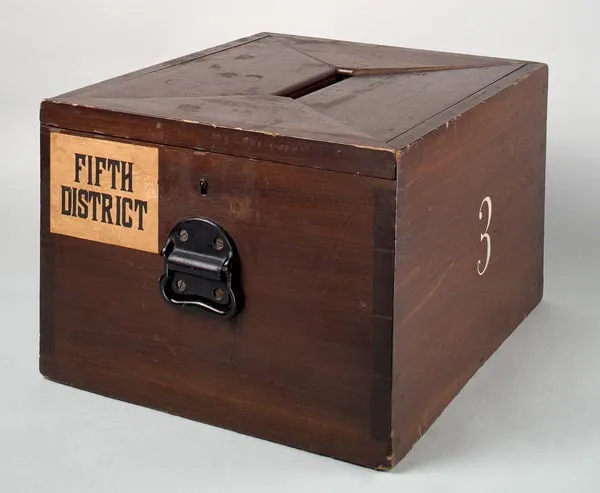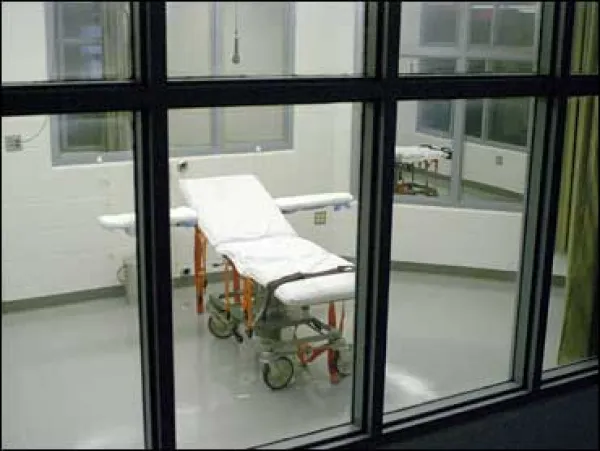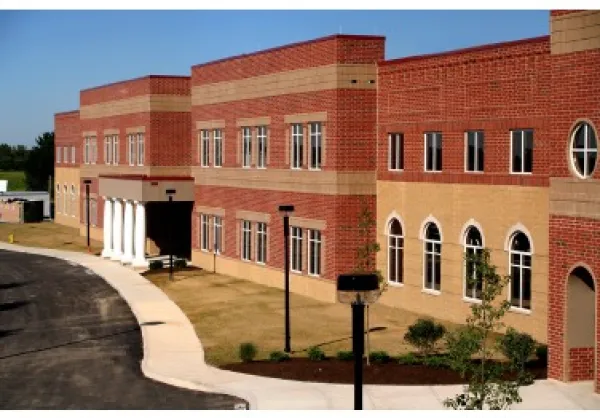The elephant in the room: Are our Ohio environmental regulators hiding fracking radioactive contamination?
Image

Ohioans were horrified to hear news stories about the spill of toxic material into the Ohio River from a West Virginia coal company. Some of our neighbors to the southeast still cannot drink their water. What most Ohioans have not heard about is the intentional dumping of 20,000 gallons of radioactive and toxic fracking waste water into Ohio’s Mahoning River. Three tanker trucks full of so-called “brine” were deliberately pumped into a storm drain leading into the Mahoning on Thursday, January 31, 2013. More than a year later, it is still not clear exactly what chemicals the illegally disposed of waste contained.
The presence of radioactivity in the fracking waste could potentially keep Ohioans from drinking water in areas near the Mahoning River for thousands of years. Documents obtained by the Free Press indicate that the Ohio Department of Health (ODH) may be misleading the public regarding the severity of the illegal dumping.
Stop public subsidies to USEC, inc. a bankrupt company
Image

In December, 2013, USEC, Inc., the company building the American Centrifuge Plant (ACP) to enrich uranium at Piketon, OH, announced it would file for bankruptcy in the first quarter of 2014. USEC said they are restructuring to write off $530 million in debts. Unbelievably, bankruptcy did not end government subsidy for the ACP.
* Just hours after USEC announced bankruptcy, the U.S. Department of Energy (DOE) announced it would subsidize $24 million to keep the nonfunctional ACP afloat for 3 more months.
* On the same day as the bankruptcy, USEC announced they are seeking new investor money because of a “National Security Train Program” (sic) utilizing ACP technology to be subsidized by the government for not less than $750 million. No official DOE or other government documents could be found mentioning a National Security Train Program, and neither the DOE nor USEC would comment on the program.
* In January, 2014, the U.S. House passed a federal spending bill that included $118 million in subsidies for the ACP.
Wean Ohio politicians off pork!
WHAT SOLYNDRA? Many Republicans such as U.S.
Income-tax cut would favor well-to-do
Image

An across-the-board cut in rates favored by Governor John Kasich may allow low-income Ohioans to buy a slice of pizza a year, on average. Those in the middle could purchase a cheap pizza maker, while the state’s most affluent taxpayers could use their cut to go on a round-trip for two to Italy, with money left over to pay the hotel bill and buy some real Italian pizza.
Policy Matters Ohio previously noted that Senate Bill 210, a measure heard this week in Senate committee that would provide a 4 percent rate reduction, on average would provide enough for low-income Ohioans to buy a cheap cup of coffee each year. Reducing rates to get the top rate below 5 percent would allow low-income Ohioans to go to Starbucks once a year and get a Grande Medium Roast.
These are the conclusions of an analysis done for Policy Matters Ohio by the Institute on Taxation and Economic Policy, a Washington, D.C.-based research group that has a sophisticated model of the tax system. The top income-tax rate after the full phase-in of cuts approved last year will be 5.333 percent, down from the previous 5.925 percent and from 7.5 percent a decade ago.
The elephant in the room: Are our Ohio environmental regulators hiding fracking radioactive contamination?
Ohioans were horrified to hear news stories about the spill of toxic material into the Ohio River from a West Virginia coal company. Some of our neighbors to the southeast still cannot drink their water.
What most Ohioans have not heard about is the intentional dumping of 20,000 gallons of radioactive and toxic fracking waste water into Ohio’s Mahoning River. Three tanker trucks full of so-called “brine” were deliberately pumped into a storm drain leading into the Mahoning on Thursday, January 31, 2013. More than a year later, it is still not clear exactly what chemicals the illegally disposed of waste contained.
The presence of radioactivity in the fracking waste could potentially keep Ohioans from drinking water in areas near the Mahoning River for thousands of years.
What most Ohioans have not heard about is the intentional dumping of 20,000 gallons of radioactive and toxic fracking waste water into Ohio’s Mahoning River. Three tanker trucks full of so-called “brine” were deliberately pumped into a storm drain leading into the Mahoning on Thursday, January 31, 2013. More than a year later, it is still not clear exactly what chemicals the illegally disposed of waste contained.
The presence of radioactivity in the fracking waste could potentially keep Ohioans from drinking water in areas near the Mahoning River for thousands of years.
Are you on the Columbus Police’s secret blacklist?
Not many citizens of Columbus are aware that if the police think you report too many crimes – or complain about them – Columbus’ finest will put you on a “list” and simply ignore your complaints.
The history of how a whistleblower or concerned citizen becomes a “chronic complainer,” blacklisted by the Columbus Police, is well-documented in public records.
Take for example Bernadine Kennedy Kent, the woman who initiated the federal investigation into vendor theft and fraud in the Columbus City Schools system. At the same time Kent was acting as a whistleblower and igniting a federal investigation into the No Child Left Behind (NCLB) funds, she was being blacklisted by the Columbus Police.
How to become a chronic complainer
Kent, a former Columbus City Schools vice principal, runs the nonprofit advocacy group PASS – Parent Advocates for Students in School. In 2006, Kent filed complaints with Columbus Police against the Columbus City Schools for theft and fraud in NCLB funds. When this did not yield results, Kent provided information to the FBI that launched an investigation into the Columbus School’s tutoring program.
The history of how a whistleblower or concerned citizen becomes a “chronic complainer,” blacklisted by the Columbus Police, is well-documented in public records.
Take for example Bernadine Kennedy Kent, the woman who initiated the federal investigation into vendor theft and fraud in the Columbus City Schools system. At the same time Kent was acting as a whistleblower and igniting a federal investigation into the No Child Left Behind (NCLB) funds, she was being blacklisted by the Columbus Police.
How to become a chronic complainer
Kent, a former Columbus City Schools vice principal, runs the nonprofit advocacy group PASS – Parent Advocates for Students in School. In 2006, Kent filed complaints with Columbus Police against the Columbus City Schools for theft and fraud in NCLB funds. When this did not yield results, Kent provided information to the FBI that launched an investigation into the Columbus School’s tutoring program.
A new Voter Bill of Rights: Make it part of the Ohio Constitution
Image

Not since the abolitionists and suffragists rocked Ohio’s politics in the 19th and 20th centuries has a movement in the Buckeye State been so essential to human rights. The announcement last week that Ohio’s Legislative Black Caucus, aided by civil rights advocates, is backing The Voter Bill of Rights as an amendment to the Ohio Constitution is the single most important issue before us in the 21st century. The proposed constitutional amendment would end the massive new Jim Crow purges of poor and black people Ohio has become notorious for in national elections.
The amendment would adopt the approach of the European Union and make voting a Constitutional right. Many Americans are shocked to discover that the right to vote is currently not an enshrined Constitutional right. Voting rights are often limited by the 50 different state governments that administer federal, state and local elections.
The proposed voter bill of rights would assure that all qualified Ohio citizens have a right to cast a ballot, and more importantly, have that ballot counted.
Since the 2004 election, Ohio’s history in purging poor and low income voters has been nothing less than appalling.
No Coup de Grace: “Death by torture” in Ohio
Image

I have seen images of many executions over the decades that I’ve been working to end the death penalty. One that stands out in my mind is film footage of an Iraqi military execution of a number of men tied to posts. After the initial volley, an officer then walked down the line, quickly putting a bullet into the head of each victim.
The Coup de Grace, a final blow to end the suffering of a mortally wounded person, seems to be an odd demonstration of compassion in the midst of an otherwise gross violation of human rights. Yet, if Ohio is allowed to continue with its current execution protocol, I can see a day when those charged with carrying out executions will insist on its use.
Amnesty International (AI) opposes the death penalty as a violation of the right to life, as enshrined in the Universal Declaration of Human Rights.
A rural development: Who pays and who profits?
Image

Concerned residents of the Village of Yellow Springs held a community forum to better understand and discuss the merits of a proposed $1 million bond issue to support infrastructure for a business park on the edge of that storied Ohio town. The proposed “Center for Business and Education” has been in the works for more than a decade, and has drawn public funding for private development through a non-official community development corporation with strong ties to the village government and a small group of local business interests. A group of residents have aligned themselves to fight public funding for the project through a ballot referendum should a bond issue be passed. The group is concerned that a small number of well-connected residents stand to profit from the development while the public assumes the up front cost risks as debt.
About 50 village residents gathered to hear local commercial real estate professionals give a overall negative forecast for the profitability of the project.
Nuclear News: USEC Bankruptcy
Image

USEC Inc., the company building the American Centrifuge Plant (ACP) to enrich uranium at Piketon, OH, announced it will file for bankruptcy in the first quarter of 2014. USEC said they are restructuring to pay off $530 million in debts to bondholders.
Unbelievably, the bankruptcy did not end government subsidy for the ACP.
* Just hours after USEC announced bankruptcy, the U. S. Dept. of Energy (DOE) announced it would give the company $30 million to keep the ACP alive—around $10 million per month for the next 3 months.
* In an article critical of the DOE’s subsidy decision, the online stock market news 4-traders wrote about how USEC, on the same day as the bankruptcy, announced that they are seeking new investor money because of a “National Security Train Program” utilizing ACP technology to be funded by the government for not less than $750 million. No official DOE or other government documents could be found mentioning a “National Security Train Program,” and neither DOE nor USEC would comment on the program.
USEC has put about $2.5 billion, much of this subsidized by the DOE, into the ACP.
GHOSTS OF CHRISTMAS PAST:
Image

Granny gather up your girlfriends, and head to Hollywood. Casino that is.
This appears to be the best – and perhaps the only -- way that Columbus and Franklin County residents can avoid an unexpected potential $97 million increase in the cost of the publicly financed Nationwide Arena, according to a Press Release by, and exclusive interviews with key members of, the Columbus Coalition for Responsive Government.
In a Press Release provided to The Columbus Free Press by Coalition spokesperson Jonathan Beard (Beard also serves as Chair of the Editorial Board of the Free Press), the Coalition reports that Ohio’s four casinos are not generating enough tax revenue to the state of Ohio to fully cover bond payments due from the Franklin County Facilities Convention Authority for that agency’s purchase of Nationwide Arena.
Ohio Department of Taxation reports show that actual statewide casino revenues have landed far from the rosy amounts originally projected. During the 2009 campaign for Ohio casinos, backers projected $1.9 Billion in casino gambling revenue in Ohio. By 2011, the state of Ohio revised its budget forecast for the casinos downward to just $1.1 Billion.
